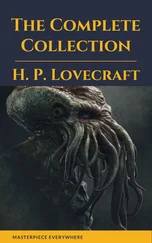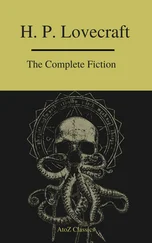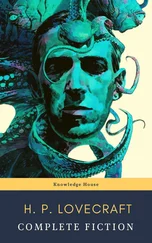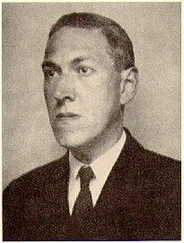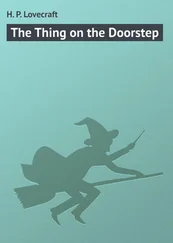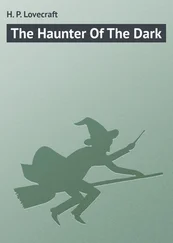H. P. Lovecraft - The Complete Fiction of H. P. Lovecraft
Здесь есть возможность читать онлайн «H. P. Lovecraft - The Complete Fiction of H. P. Lovecraft» — ознакомительный отрывок электронной книги совершенно бесплатно, а после прочтения отрывка купить полную версию. В некоторых случаях можно слушать аудио, скачать через торрент в формате fb2 и присутствует краткое содержание. Жанр: unrecognised, на немецком языке. Описание произведения, (предисловие) а так же отзывы посетителей доступны на портале библиотеки ЛибКат.
- Название:The Complete Fiction of H. P. Lovecraft
- Автор:
- Жанр:
- Год:неизвестен
- ISBN:нет данных
- Рейтинг книги:3 / 5. Голосов: 1
-
Избранное:Добавить в избранное
- Отзывы:
-
Ваша оценка:
- 60
- 1
- 2
- 3
- 4
- 5
The Complete Fiction of H. P. Lovecraft: краткое содержание, описание и аннотация
Предлагаем к чтению аннотацию, описание, краткое содержание или предисловие (зависит от того, что написал сам автор книги «The Complete Fiction of H. P. Lovecraft»). Если вы не нашли необходимую информацию о книге — напишите в комментариях, мы постараемся отыскать её.
Lovecraft was virtually unknown during his lifetime and published only in pulp magazines before he died in poverty, but is now regarded as one of the most significant 20th-century authors of weird and horror fiction.
The Complete Fiction of H. P. Lovecraft — читать онлайн ознакомительный отрывок
Ниже представлен текст книги, разбитый по страницам. Система сохранения места последней прочитанной страницы, позволяет с удобством читать онлайн бесплатно книгу «The Complete Fiction of H. P. Lovecraft», без необходимости каждый раз заново искать на чём Вы остановились. Поставьте закладку, и сможете в любой момент перейти на страницу, на которой закончили чтение.
Интервал:
Закладка:
The building which we had entered was one of great size and elaborateness, and gave us an impressive notion of the architecture of that nameless geologic past.The inner partitions were less massive than the outer walls, but on the lower levels were excellently preserved.Labyrinthine complexity, involving curiously irregular differences in floor levels, characterised the entire arrangement; and we should certainly have been lost at the very outset but for the trail of torn paper left behind us.We decided to explore the more decrepit upper parts first of all, hence climbed aloft in the maze for a distance of some 100 feet, to where the topmost tier of chambers yawned snowily and ruinously open to the polar sky.Ascent was effected over the steep, transversely ribbed stone ramps or inclined planes which everywhere served in lieu of stairs.The rooms we encountered were of all imaginable shapes and proportions, ranging from five-pointed stars to triangles and perfect cubes.It might be safe to say that their general average was about 30 × 30 feet in floor area, and 20 feet in height; though many larger apartments existed.After thoroughly examining the upper regions and the glacial level we descended story by story into the submerged part, where indeed we soon saw we were in a continuous maze of connected chambers and passages probably leading over unlimited areas outside this particular building.The Cyclopean massiveness and giganticism of everything about us became curiously oppressive; and there was something vaguely but deeply unhuman in all the contours, dimensions, proportions, decorations, and constructional nuances of the blasphemously archaic stonework.We soon realised from what the carvings revealed that this monstrous city was many million years old.
We cannot yet explain the engineering principles used in the anomalous balancing and adjustment of the vast rock masses, though the function of the arch was clearly much relied on.The rooms we visited were wholly bare of all portable contents, a circumstance which sustained our belief in the city’s deliberate desertion.The prime decorative feature was the almost universal system of mural sculpture; which tended to run in continuous horizontal bands three feet wide and arranged from floor to ceiling in alternation with bands of equal width given over to geometrical arabesques.There were exceptions to this rule of arrangement, but its preponderance was overwhelming.Often, however, a series of smooth cartouches containing oddly patterned groups of dots would be sunk along one of the arabesque bands.
The technique, we soon saw, was mature, accomplished, and aesthetically evolved to the highest degree of civilised mastery; though utterly alien in every detail to any known art tradition of the human race.In delicacy of execution no sculpture I have ever seen could approach it.The minutest details of elaborate vegetation, or of animal life, were rendered with astonishing vividness despite the bold scale of the carvings; whilst the conventional designs were marvels of skilful intricacy.The arabesques displayed a profound use of mathematical principles, and were made up of obscurely symmetrical curves and angles based on the quantity of five.The pictorial bands followed a highly formalised tradition, and involved a peculiar treatment of perspective; but had an artistic force that moved us profoundly notwithstanding the intervening gulf of vast geologic periods.Their method of design hinged on a singular juxtaposition of the cross-section with the two-dimensional silhouette, and embodied an analytical psychology beyond that of any known race of antiquity.It is useless to try to compare this art with any represented in our museums.Those who see our photographs will probably find its closest analogue in certain grotesque conceptions of the most daring futurists.
The arabesque tracery consisted altogether of depressed lines whose depth on unweathered walls varied from one to two inches.When cartouches with dot-groups appeared—evidently as inscriptions in some unknown and primordial language and alphabet—the depression of the smooth surface was perhaps an inch and a half, and of the dots perhaps a half-inch more.The pictorial bands were in counter-sunk low relief, their background being depressed about two inches from the original wall surface.In some specimens marks of a former colouration could be detected, though for the most part the untold aeons had disintegrated and banished any pigments which may have been applied.The more one studied the marvellous technique the more one admired the things.Beneath their strict conventionalisation one could grasp the minute and accurate observation and graphic skill of the artists; and indeed, the very conventions themselves served to symbolise and accentuate the real essence or vital differentiation of every object delineated.We felt, too, that besides these recognisable excellences there were others lurking beyond the reach of our perceptions.Certain touches here and there gave vague hints of latent symbols and stimuli which another mental and emotional background, and a fuller or different sensory equipment, might have made of profound and poignant significance to us.
The subject-matter of the sculptures obviously came from the life of the vanished epoch of their creation, and contained a large proportion of evident history.It is this abnormal historic-mindedness of the primal race—a chance circumstance operating, through coincidence, miraculously in our favour—which made the carvings so awesomely informative to us, and which caused us to place their photography and transcription above all other considerations.In certain rooms the dominant arrangement was varied by the presence of maps, astronomical charts, and other scientific designs on an enlarged scale—these things giving a naive and terrible corroboration to what we gathered from the pictorial friezes and dadoes.In hinting at what the whole revealed, I can only hope that my account will not arouse a curiosity greater than sane caution on the part of those who believe me at all.It would be tragic if any were to be allured to that realm of death and horror by the very warning meant to discourage them.
Interrupting these sculptured walls were high windows and massive twelve-foot doorways; both now and then retaining the petrified wooden planks—elaborately carved and polished—of the actual shutters and doors.All metal fixtures had long ago vanished, but some of the doors remained in place and had to be forced aside as we progressed from room to room.Window-frames with odd transparent panes—mostly elliptical—survived here and there, though in no considerable quantity.There were also frequent niches of great magnitude, generally empty, but once in a while containing some bizarre object carved from green soapstone which was either broken or perhaps held too inferior to warrant removal.Other apertures were undoubtedly connected with bygone mechanical facilities—heating, lighting, and the like—of a sort suggested in many of the carvings.Ceilings tended to be plain, but had sometimes been inlaid with green soapstone or other tiles, mostly fallen now.Floors were also paved with such tiles, though plain stonework predominated.
As I have said, all furniture and other moveables were absent; but the sculptures gave a clear idea of the strange devices which had once filled these tomb-like, echoing rooms.Above the glacial sheet the floors were generally thick with detritus, litter, and debris; but farther down this condition decreased.In some of the lower chambers and corridors there was little more than gritty dust or ancient incrustations, while occasional areas had an uncanny air of newly swept immaculateness.Of course, where rifts or collapses had occurred, the lower levels were as littered as the upper ones.A central court—as in other structures we had seen from the air—saved the inner regions from total darkness; so that we seldom had to use our electric torches in the upper rooms except when studying sculptured details.Below the ice-cap, however, the twilight deepened; and in many parts of the tangled ground level there was an approach to absolute blackness.
Читать дальшеИнтервал:
Закладка:
Похожие книги на «The Complete Fiction of H. P. Lovecraft»
Представляем Вашему вниманию похожие книги на «The Complete Fiction of H. P. Lovecraft» списком для выбора. Мы отобрали схожую по названию и смыслу литературу в надежде предоставить читателям больше вариантов отыскать новые, интересные, ещё непрочитанные произведения.
Обсуждение, отзывы о книге «The Complete Fiction of H. P. Lovecraft» и просто собственные мнения читателей. Оставьте ваши комментарии, напишите, что Вы думаете о произведении, его смысле или главных героях. Укажите что конкретно понравилось, а что нет, и почему Вы так считаете.



